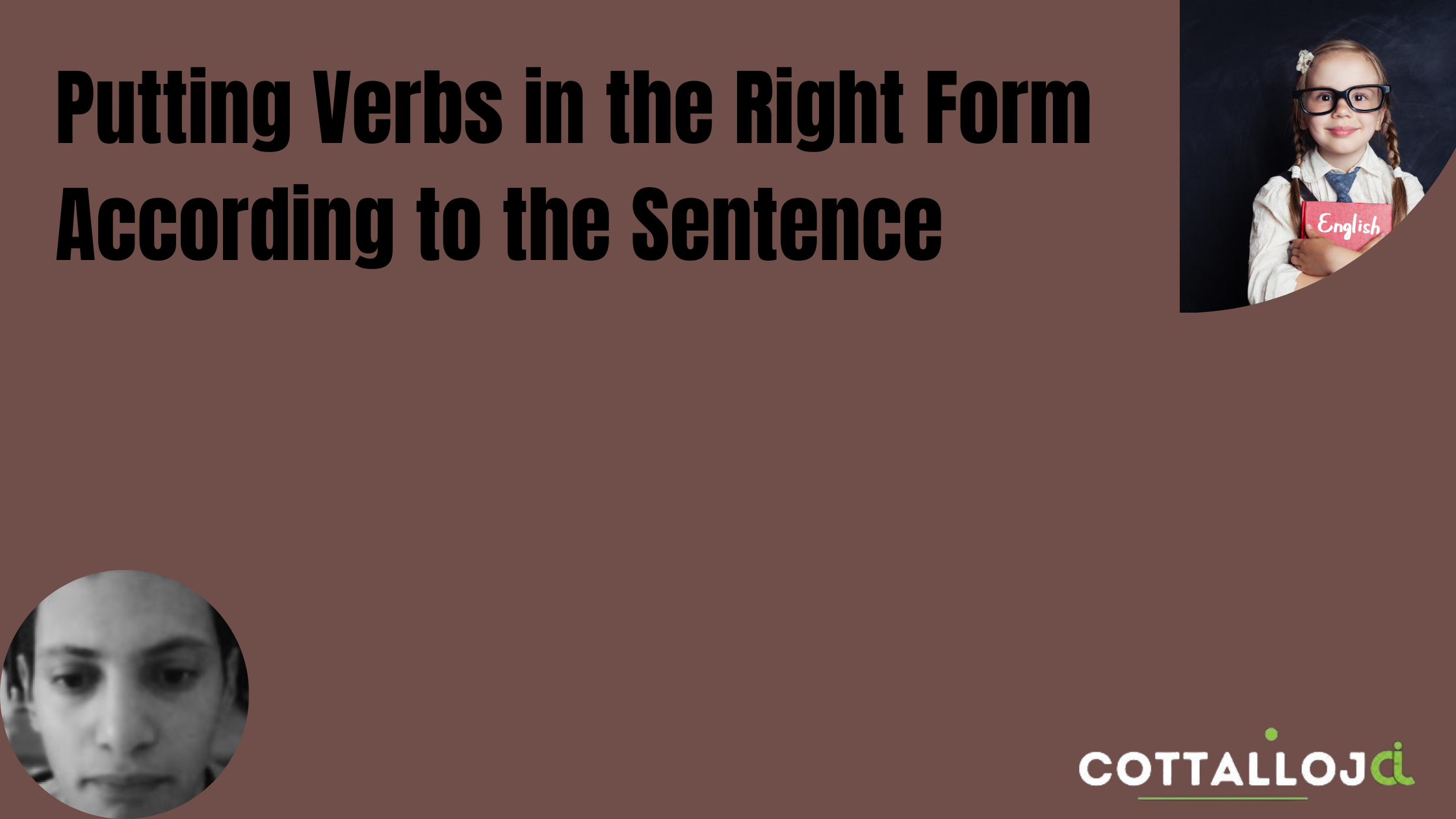Lesson Title: Putting Verbs in the Right Form According to the Sentence
Objective:
By the end of this lesson, students will be able to correctly use verbs in different tenses and forms according to the context of a sentence.
Materials:
- Whiteboards and markers
- Worksheets with sentences and fill-in-the-blank exercises
- Handout with verb conjugation charts
- Projector (optional)
Introduction (10 minutes) :
Begin the lesson by discussing the importance of using verbs correctly in sentences. Explain that verbs are the action words in a sentence and can change their form to indicate different tenses, moods, or conditions.
Provide examples of sentences with verbs in various forms, such as past tense, present tense, and future tense. Ask students to identify the differences in verb forms and how they affect the meaning of the sentences.
Verb Conjugation Review (15 minutes):
3. Present a brief review of verb conjugation in English. Use the whiteboard or projector to display conjugation charts for regular and irregular verbs in different tenses (e.g., present simple, past simple, future simple). Discuss the common verb endings for each tense (e.g., -s for present, -ed for past).
- Provide examples of regular and irregular verbs in different tenses and ask students to conjugate them correctly on the whiteboard.
Practice Exercises (20 minutes):
5. Distribute worksheets with sentences containing blanks for verbs. In pairs or individually, have students fill in the blanks with the correct verb form according to the context of each sentence.
- Walk around the classroom to monitor students' progress and provide assistance as needed.
Class Discussion (10 minutes):
7. Review the completed worksheets as a class. Discuss any common errors or challenges students encountered while choosing the correct verb forms.
- Encourage students to share their answers and explanations for their choices. This will foster peer learning and help clarify any misconceptions.
Verb Form in Context (15 minutes):
9. Provide sentences or short paragraphs that require students to select the appropriate verb form based on the context. Emphasize the importance of considering the surrounding words and sentence structure when choosing the correct form.
- Discuss the solutions as a class and ask students to explain their choices. This will help them understand how verb forms can change depending on the sentence's meaning.
Homework Assignment (5 minutes):
11. Assign homework exercises or a writing task that requires students to use verbs in different forms according to provided sentences or paragraphs. Remind them to pay attention to context.
Conclusion (5 minutes):
12. Summarize the key points of the lesson: the importance of choosing the right verb form based on sentence context and the impact it has on the meaning of sentences.
- Encourage students to practice verb conjugation regularly to improve their proficiency.
Assessment:
Assess students' understanding through their participation in class discussions, completion of in-class exercises, and their performance on the homework assignment.
Extension Activity (Optional):
For advanced students, introduce more complex tenses and moods, such as conditional and subjunctive forms, and provide additional exercises to challenge their skills in using verbs appropriately.
Activity: Verb Form Challenge
Objective: In this activity, students will practice using verbs in the correct form according to the context of each sentence. They will be provided with sentences that require them to choose the appropriate verb tense and form. The activity includes a set of sentences, and at the end, you'll find the solutions for reference.
Instructions:
Distribute the activity sheet with sentences to each student.
Ask students to read each sentence carefully and choose the correct form of the verb to fill in the blank. Remind them to consider the context of the sentence and the tense or mood required.
Allow students 15-20 minutes to complete the activity independently.
After they have finished, review the correct answers as a class, discussing the reasons behind the choices for each sentence.
Activity Sheet:
Fill in the blanks with the correct form of the verb in parentheses.
- She __________ (study) English for three years now.
- By this time tomorrow, we __________ (finish) the project.
- If I ________ (know) the answer, I would tell you.
- He ________ (be) very tired yesterday.
- They ________ (read) books in the library when the fire alarm rang.
- She wishes she __________ (visit) Paris someday.
- I promise I ________ (call) you as soon as I get home.
- The students ________ (not be) to the new museum yet.
- By next summer, he ________ (learn) how to swim.
- If it ________ (rain) tomorrow, we won't have a picnic.
Solutions:
- has been studying
- will have finished
- knew
- was
- were reading
- could visit
- will call
- have not been
- will have learned
- rains






